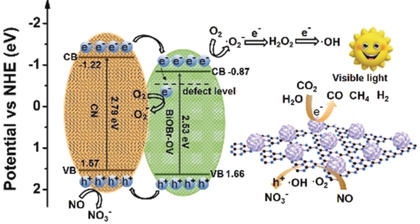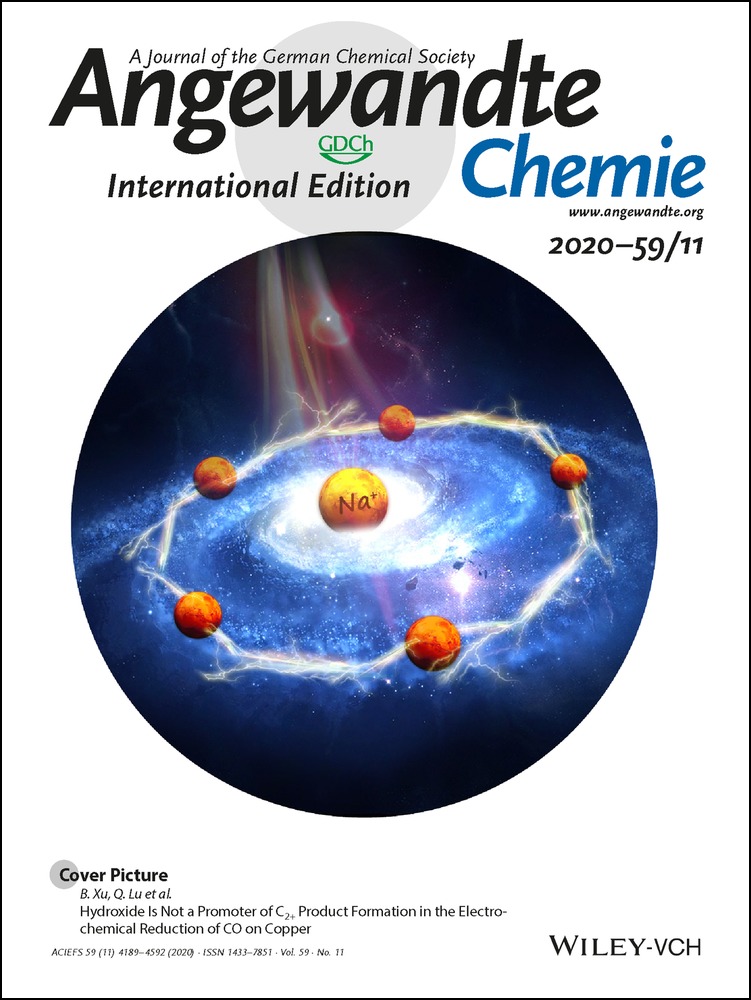Surface Engineering of g-C3N4 by Stacked BiOBr Sheets Rich in Oxygen Vacancies for Boosting Photocatalytic Performance
Graphical Abstract
BiOBr nanoflowers, sheet-stacked and rich in oxygen vacancies, are prepared by a simple solvothermal process and form a heterojunction with graphitic carbon nitride. Oxygen vacancies and the heterojunction synergistically promote photocatalysis, achieving a NO degradation effect of 63 % and 96 % selectivity for carbonaceous products for CO2 conversion.
Abstract
BiOBr containing surface oxygen vacancies (OVs) was prepared by a simple solvothermal method and combined with graphitic carbon nitride (g-C3N4) to construct a heterojunction for photocatalytic oxidation of nitric oxide (NO) and reduction of carbon dioxide (CO2). The formation of the heterojunction enhanced the transfer and separation efficiency of photogenerated carriers. Furthermore, the surface OVs sufficiently exposed catalytically active sites, and enabled capture of photoexcited electrons at the surface of the catalyst. Internal recombination of photogenerated charges was also limited, which contributed to generation of more active oxygen for NO oxidation. Heterojunction and OVs worked together to form a spatial conductive network framework, which achieved 63 % NO removal, 96 % selectivity for carbonaceous products (that is, CO and CH4). The stability of the catalyst was confirmed by cycling experiments and X-ray diffraction and transmission electron microscopy after NO removal.
Conflict of interest
The authors declare no conflict of interest.





